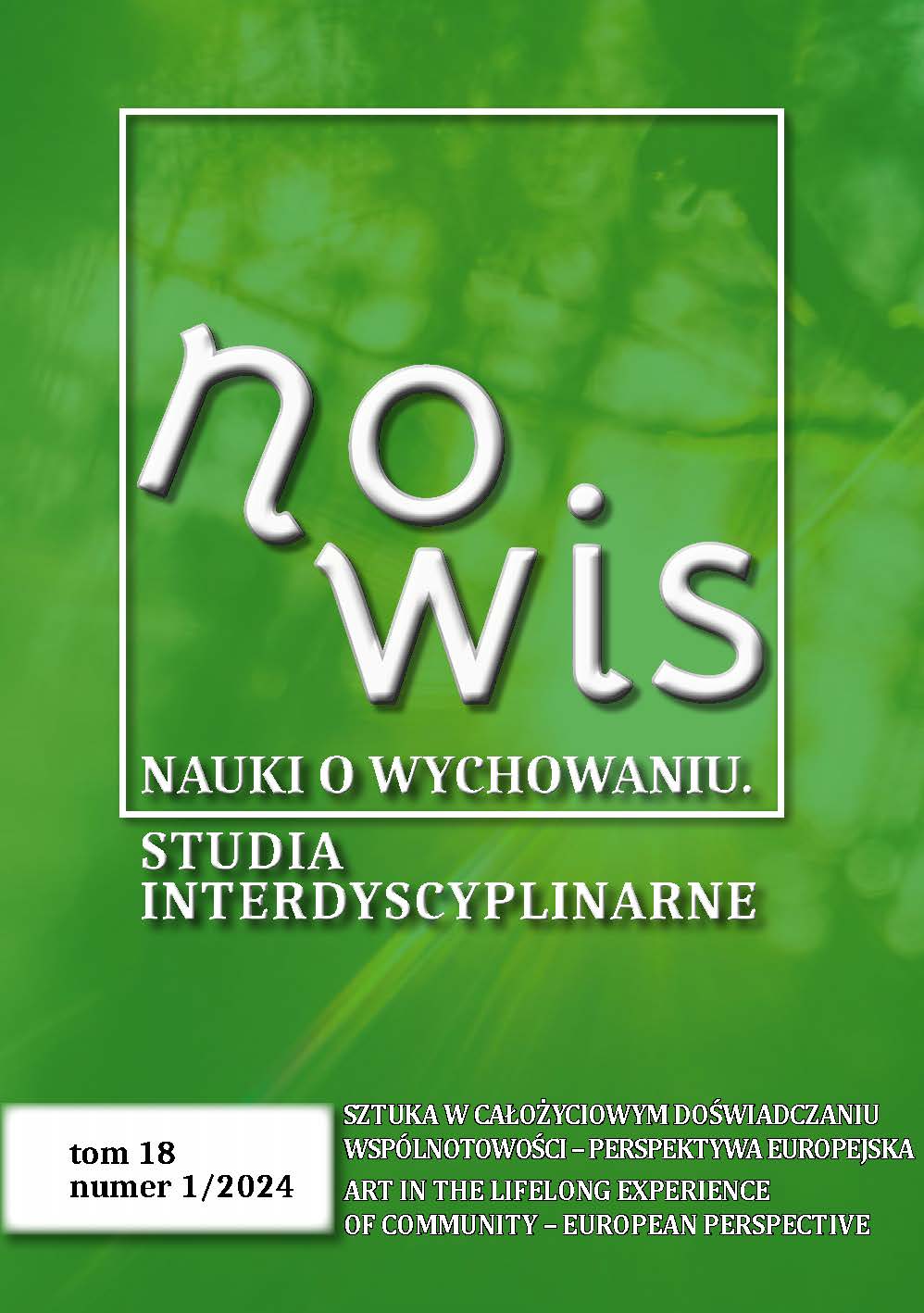Distributed Community. Participatory Actions and Organizational Culture of a Museum Institution
DOI:
https://doi.org/10.18778/2450-4491.18.12Keywords:
museum, museum education, new museology, participation, community projectAbstract
The article discusses the consequences of participatory actions in a museum exemplified by the Find Art exhibition presented at the Muzeum Sztuki Lodz in 2017. It focuses on the transformative impact of participatory projects on museum culture and organizational structure. Museums have shifted from collection-driven entities to audience-oriented institutions, blurring lines between entertainment, education, and cultural heritage. The author highlights the changing paradigm of museums from old to new museology, critiquing power structures within museums. Based on the analysis of the Find Art exhibition the author argues that participatory projects reconfigure a museum institution, creating a Protean community of multi-functional collaborations that challenge conventional museum roles. He suggests a post-critical approach, defining a “distributed museum,” where networks of dependencies redefine the museum’s role beyond traditional boundaries. The author acknowledges the diverse contributions within the distributed museum, encompassing both formal and informal entities and addresses potential implications of exploitation within this dynamic community.
References
Bishop C. (2012) Artificial Hells. Participatory Art and the Politics of Spectatorship, London – New York, Verso Books.
Google Scholar
Boćkowska A. (2023) To wszystko nie robi się samo. Rozmowy na zapleczu kultur, Wołowiec, Wydawnictwo Czarne.
Google Scholar
Dewdney A., Dibosa D., Walsh V. (2013) Post-Critical Museology. Theory and Practice in the Art. Museum, London – New York, Routledge, https://doi.org/10.4324/9780203084595
Google Scholar
DOI: https://doi.org/10.4324/9780203084595
Hooper-Greenhill E. (1994) Museum Education: Past, Present and Future in: Towards the Museum of the Future: New European Perspectives, R. Miles, L. Zavala (eds.), New York, Routledge, pp. 133–144.
Google Scholar
Karczewski L. (2012) Ucieczka do przodu. Autonomia instytucji muzeum jako alternatywa dla edukacji muzealnej, “Biuletyn Programowy”, no. 5 (Muzeum w przestrzeni edukacji otwartej), Narodowy Instytut Muzealnictwa i Ochrony Zbiorów, pp. 25–34.
Google Scholar
Latour B. (2005) Reassembling the Social: An Introduction to Actor-Network-Theory, Oxford – New York, Oxford University Press, https://doi.org/10.1093/oso/9780199256044.001.0001
Google Scholar
DOI: https://doi.org/10.1093/oso/9780199256044.001.0001
Od redakcji (2012) “Biuletyn Programowy”, no. 5 (Muzeum w przestrzeni edukacji otwartej), Narodowy Instytut Muzealnictwa i Ochrony Zbiorów, pp. 7–11.
Google Scholar
Preziosi D., Farago C. (2004) General Introduction: What is Museum For? in: Grasping the World. The Idea of the Museum, D. Preziosi, C. Farago (eds.), New York, Routledge, pp. 2–11.
Google Scholar
ICOM (2022), https://icom.museum/en/resources/standards-guidelines/museum-definition/ (access: 25.10.2023).
Google Scholar






 The journal's website, created and edited by the NOWiS Editorial Team on the Index Copernicus platform:
The journal's website, created and edited by the NOWiS Editorial Team on the Index Copernicus platform: 





